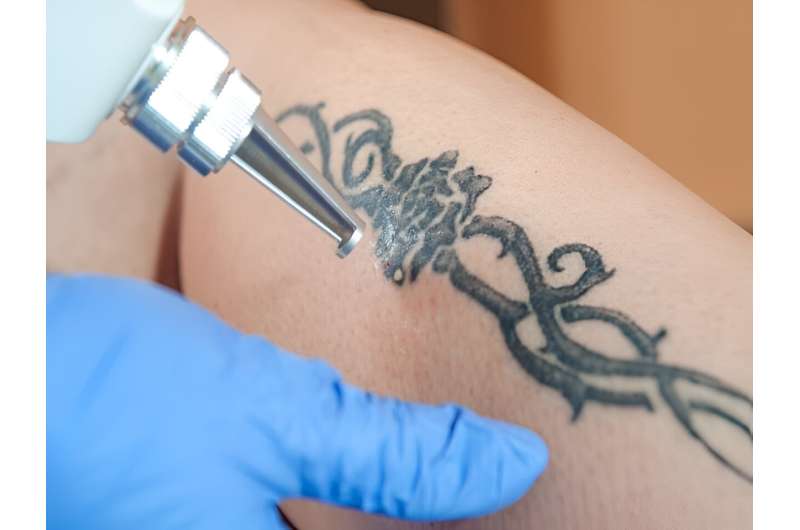This article has been reviewed according to Science X's editorial process and policies. Editors have highlighted the following attributes while ensuring the content's credibility:
fact-checked
reputable news agency
proofread
Tattoo regret? Here are some tips on safely getting old 'Ink' removed

Whether you got a tattoo on a whim or after much thought, that ink on your body is fairly permanent.
Tattoo removal is possible, but it comes with risks, according to the U.S. Food and Drug Administration, which regulates tattoo ink and pigment, as well as the laser devices used to remove them. State and local authorities typically oversee tattooing practices.
The FDA has cleared several types of lasers for tattoo lightening or removal. They are to be used by or under the supervision of a health care professional. The process requires using the correct type of laser, understanding how tissue will react and knowing how to treat the area after the procedure.
One challenge with removal is that tattoos are more than skin deep. The needle injects ink into the skin, penetrating the epidermis, or outer layer. And it also deposits a drop of ink into the dermis, the layer underneath.
The cells of the dermis are more stable than those of the epidermis, which, the FDA said, means the ink will mostly stay in place for a person's lifetime.
Lasering is the most common method for removing or lightening tattoos, according to the FDA. Laser light energy shatters the tattoo ink into small particles, and the immune system clears these particles over time.
Different types of lasers may be used depending on the tattoo's colors. Different colors of ink absorb different wavelengths of light, the FDA explained in a news release.
For that reason, removing multi-colored tattoos may require use of multiple lasers. The hardest colors to remove are green, red and yellow. Dark blue and black are the easiest.
It's especially difficult to remove flesh-colored or white ink and permanent makeup tattoos because the pigment in these colors can oxidize, turning black, when treated by laser. After the pigment has oxidized, it can't be treated by laser.
Permanent makeup is a tattoo meant to take the place of eyebrows, eyeliner or lip liner.
Laser removal requires multiple treatments with a few weeks between procedures to give the skin time to heal. Size of tattoo and colors will affect how long the treatments are and how many are needed.
Complete removal of tattoo may not always be possible.
Laser tattoo removal can be painful. It's like snapping a thick rubber band against the skin, the FDA noted. Numbing cream can be used.
One side effect of tattoo removal is that the treated skin may be lighter than the skin around it. Scarring, infection, pinpoint bleeding, redness or soreness are other possible side effects.
Other, less commonly used, methods of tattoo removal exist.
These include dermabrasion, in which a motorized wire brush or abrader is used to "sand" away the top layer of skin. A different type of laser called an ablative laser can burn off the entire top layer of skin. The skin where the tattoo is located can also be surgically removed.
These methods do not remove the pigment but instead wound the skin above and around the pigment to stimulate an immune response that may lighten the pigment as the skin heals, the FDA said.
Although there is the potential of lightening the pigment with these methods, there is greater potential for scarring and undesirable cosmetic effects, the FDA said.
Although some creams and ointments are said to let a person remove a tattoo themselves, these products have not been reviewed by the FDA. There is no evidence that they are safe or effective, the FDA said. The products may cause skin rashes, burns or scars.
More information: The American Society of Plastic Surgeons has more on tattoo removal.
Copyright © 2023 HealthDay. All rights reserved.


















